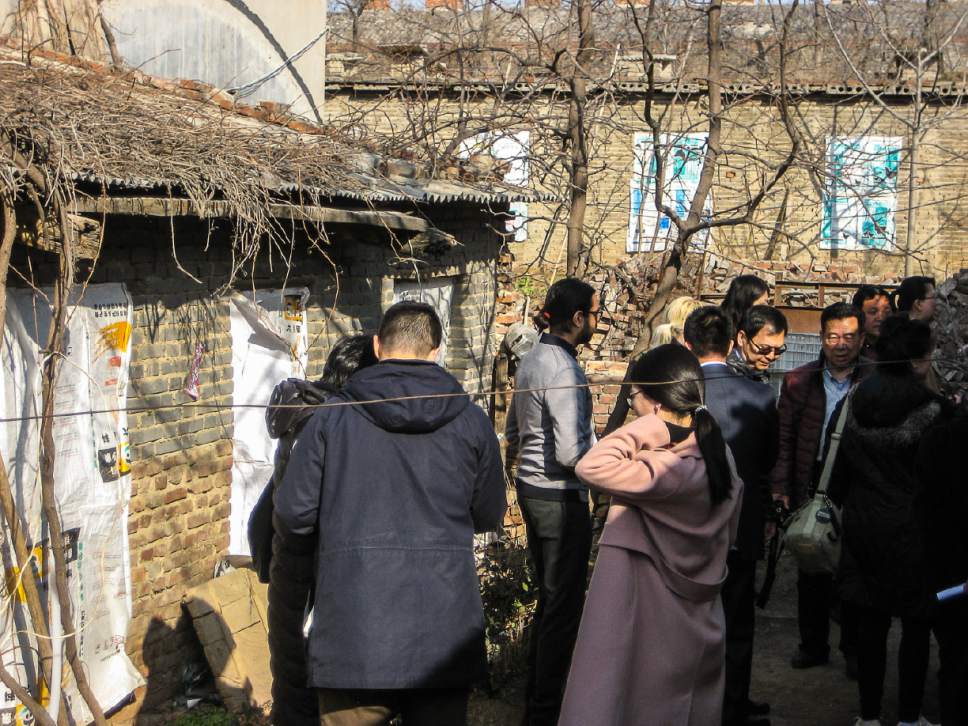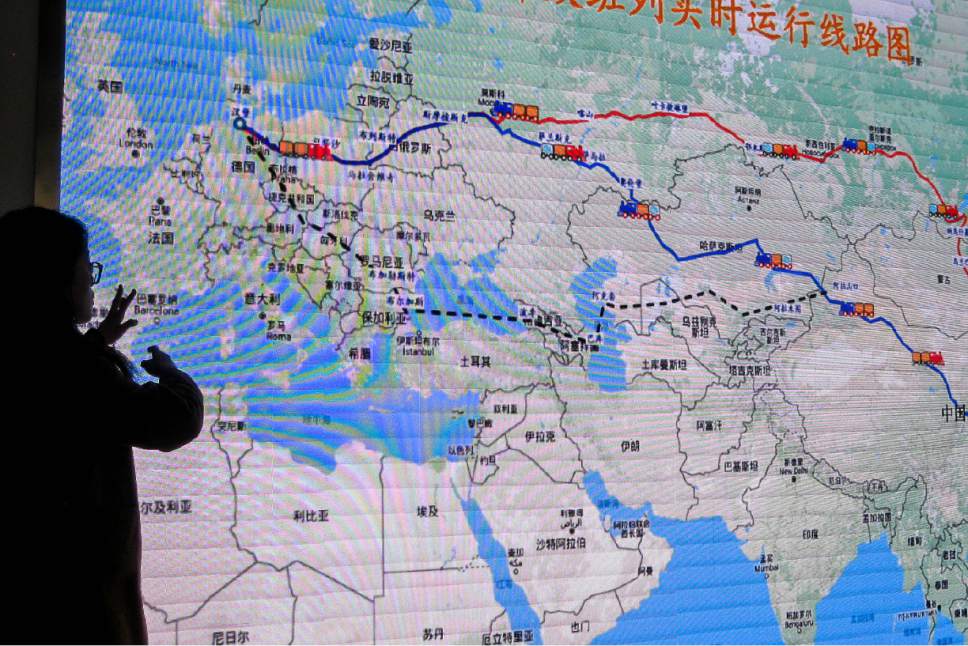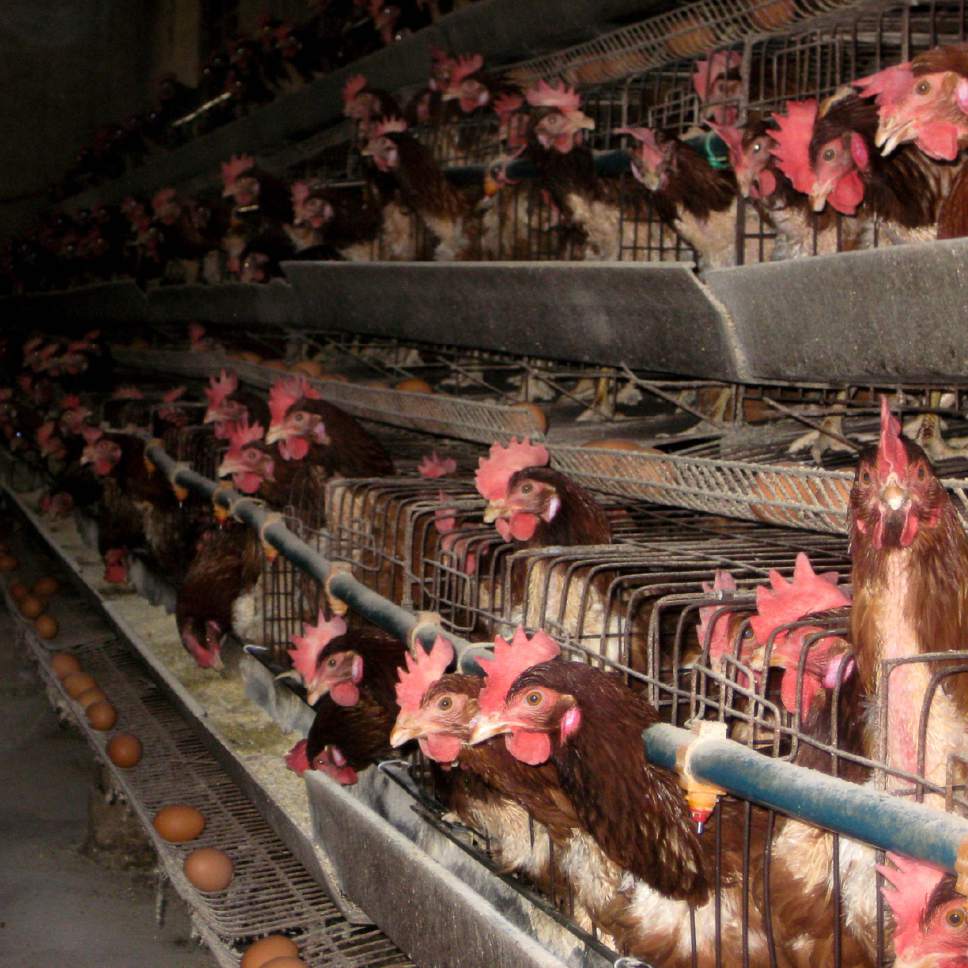This is an archived article that was published on sltrib.com in 2017, and information in the article may be outdated. It is provided only for personal research purposes and may not be reprinted.
Zhengzhou, China • Nearly 36 centuries since its days as an imperial capital, this riverside city known as Zheng for short has had a hardscrabble image.
Zhengzhou, the capital of Henan province, located on China's east-central plain along the Yellow River, holds distinct cultural credentials in a 5,000-year national history, flowing from its location and strategic role as a crossroads.
The future of Zheng and Henan offers a window on evolving U.S.-Chinese trade relations, along with Utah's nearly $1 billion annual import-export stake with China.
Centuries-old fine porcelains, statues and other delicate national treasures are housed with pride in Zhengzhou's Henan Museum. The province has yielded some of China's earliest writings and examples of so-called oracle bones, revered pieces of ox bone and tortoise shell whose heat-induced cracks told ancient soothsayers the future.
On Chinese maps, Henan looks like a beating heart for the eastern side of the country, but modern Zheng and its farming environs hold a national reputation as poor, densely populated and a little on the drab side. It is known as a smoggy rural producer of aluminum oxide, frozen foods and midsize motor buses. Residents have endured chronic teasing in Chinese social media.
But change is looming since Chinese President Xi Jinping came to power in 2012 and, a year later, the Communist Party launched a trade development and transportation strategy like none other in the world. Dubbed "One Belt, One Road," it is both a government-led multinational trade initiative and a massive state-funded infrastructure plan, one predicted to cost up to $8 trillion, with a completion date yet unknown.
Similar to President Donald Trump's calls for national public-works improvements, China hopes One Belt, One Road will modernize and upgrade its highways, bridges, airports, train lines and port facilities. The vision, widely promoted in state-owned media, is to link China's immense population and production centers seamlessly and via all forms of travel to nearly 60 other countries across Asia and Europe, in a reboot of ancient east-west trade corridors called the Silk Road.
—
Once and future hub
New U.S.-China trade talks, along with possible tariffs and alarm over import-export imbalances, have threatened to disrupt some of China's economic prowess.
And while China is signaling it hopes to shift toward a more consumption-based economy, One Belt, One Road is among its leaders' biggest and most telling bets on a continued future as a vibrant trading nation.
Thanks to its centrality, few Chinese provinces are as pivotal as Henan to trade-related elements of this sweeping party initiative. Based on late February interviews by The Salt Lake Tribune, Zhengzhou officials are clearly delighted to be caught in the middle.
Covering an area a little smaller than Wisconsin, Henan province has nearly 100 million residents. It is also among the poorest of China's 33 wildly heterogeneous provinces and municipal units, especially when compared to coastal cities.
Under One Belt, One Road, the vision for Henan, party leaders say, is threefold: forge its farmlands into a core national area for grain production and shipping; open a central plain economic zone exploiting Henan's transportation strengths; and launch an economic-experiment zone near Zhengzhou's airport.
That's already brought millions of dollars in investments and state-owned industrial development, along with an enlivened sense of Henan identity.
—
They will come
Vast numbers of villagers, at the same time, continue to leave the countryside and relocate to new urban zones as the central government tries to alleviate rural poverty. With residents pouring into Zheng, now topping 9 million people, the city is mushrooming.
The eastern side of Zhengzhou has sprouted Zhengdong New Area in just over a decade, a glittering district that covers three times the span of West Valley City — with a population of 5 million. It feels like an instant city formed in huge concentric circles of commercial, residential and green spaces, with towers in the New Area's core reaching an average height of 36 stories. Zhengdong New Area is expected to nearly double in size by 2020.
Many newcomers will be employed in an increasing number of equally new trade-related shipping and freight-processing facilities. Some now refer to wider Zhengzhou as an "aerotropolis" due to its dominant 160-square-mile airport-turned-economic development zone, China's fastest growing.
The Zhengzhou International Hub Development and Construction Co. opened major trans-shipment facilities — huge depots, railheads, cargo container and freight-processing systems — to coincide with the completion of rail links connecting Zhengzhou to Hamburg, Germany. It offers Chinese exporters 14-day shipments compared to 45 days by ocean-based container ship.
The Henan Bonded Logistics Center, also built since 2010, covers 59 million square feet, or roughly 1,025 football fields. Its storage, processing and transit facilities also serve as a duty-free trade retail outlet for goods headed to destinations such as Prague, Warsaw, Paris and Milan. During a recent tour, major parts of the sparkling logistics facility were fully lit and air-conditioned, but largely empty.
These new centers, nonetheless, are bringing economic results. Henan saw a 22.5 percent surge in import-export activity in 2015, swelling provincial pride. That same year, the Belgian air carrier Cargolux opened a major freight route between Zhengzhou, Luxembourg and Chicago. Then, in 2016, Henan's GDP hit $581 billion, beating its five provincial neighbors and further solidifying its stature as a jobs hub.
—
Quiet retreat
Visitors arrived in tiny Mayao, southwest of Zhengzhou, to sounds of explosions.
Rural villagers lit firecrackers in the surrounding fields to celebrate an ancestor-worship festival. The ear-splitting pops echoed against the hills then died down and Mayao fell strangely hushed. Children could be faintly heard singing at a nearby elementary school.
As many as 70 percent of residents in the administrative precinct that includes Mayao now live in urban areas, said Li Jie, a spokesman for rural-development efforts managed out of Zhengzhou. Nationally, that trend has left up to 60 percent of China's elderly in the countryside, according to government estimates.
Government programs to help the rural aged focus on providing plots of land and ensuring, where possible, support from family. Millions without such support receive what China calls "the five guarantees" — food, clothing, housing, medical care and burial expenses.
Mayao means "horse station" in Chinese, believed to be a relic of a centuries' old history as a site of stables for traveling horsemen. Today, as the Communist Party continues to retool the regional and national economies, its goals for Mayao include promoting tourism, fostering small cottage industries and rebalancing its farm base.
Banners with bright-red party slogans hang on the side of the school, outside a small party office and above a concrete stage in Mayao's central square.
The village of 448 modest brick homes is considered a model of cleanliness, thanks partly to a new state-built garbage collection and sorting station, one of a series of steps taken to better village life.
Once a coal mining area, Mayao is largely devoted to farming corn, beans, wheat and millet, though growers often struggle for enough irrigation water. Through government loans, residents have planted new groves of walnut and peach trees.
A cluster of buildings near the village core has been converted to a small hotel. Its name in Chinese roughly translates to, "Happy Country Life for Several Days." Officials said they hoped to attract weary residents from busy Zhengzhou or Beijing for quiet weekend getaways.
Editor's note • Tribune editor and former business reporter Tony Semerad traveled to China in late February as part of a delegation of U.S. journalists touring Beijing, Shanghai and several cities in east-central Henan province. Meant to promote understanding between the two countries, the 10-day trip was sponsored, organized and paid for by the China-United States Exchange Foundation, a Hong Kong-based nonprofit, nongovernmental and privately funded group. 3-day series of stories
Sunday • After decades of explosive Chinese economic growth, a U.S.-China trade war could derail key domestic programs, while also hurting Utah.
Today • A historic crossroads and imperial capital in China's 5,000-year history, the east-central city of Zhengzhou now is reliving some of that transportation heyday.
Tuesday • With its unique blend of 1.3 billion people, Communist rule and selective free-market reforms, China remains a hard place to do business, where strange hybrids abound.

















